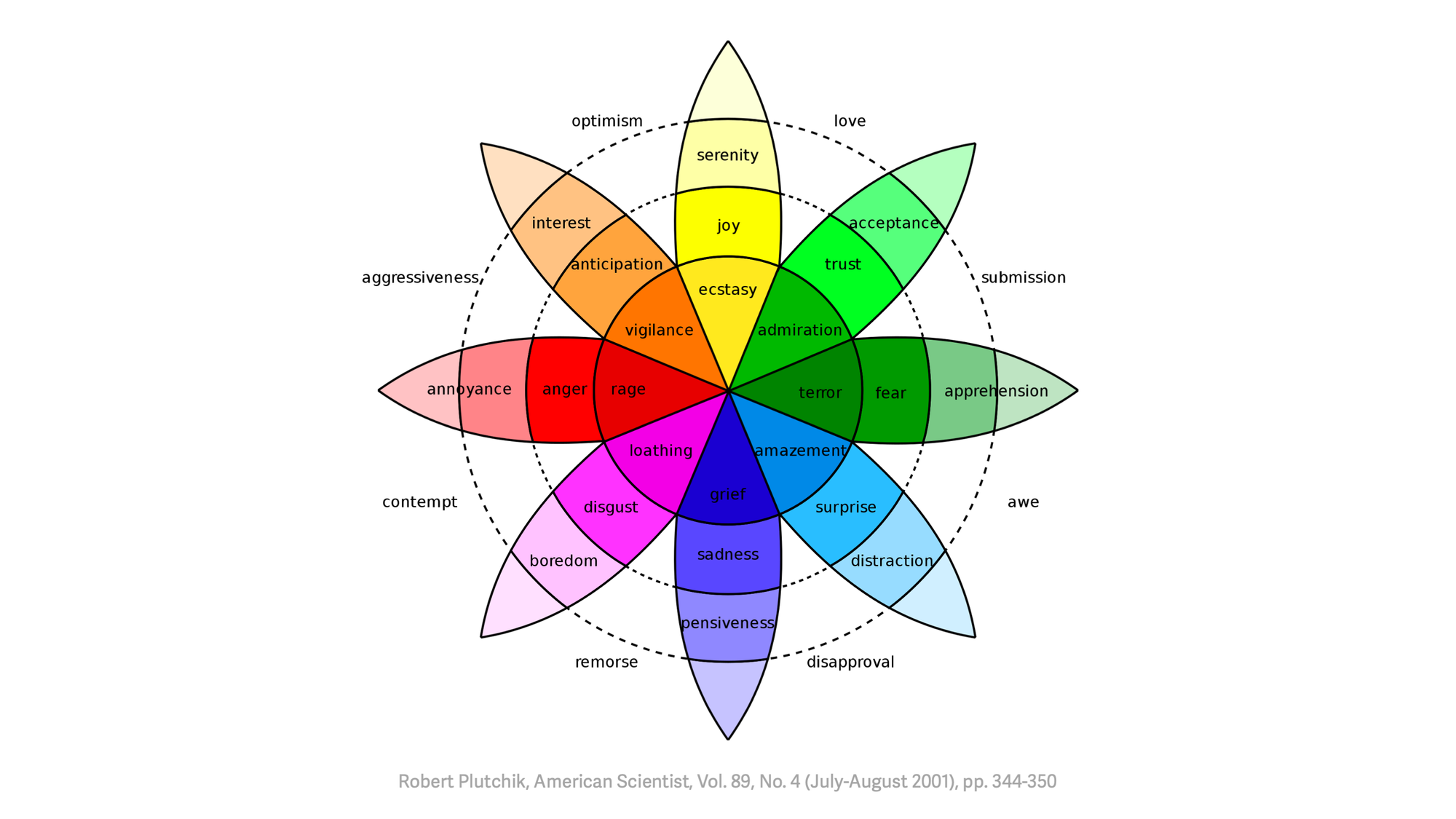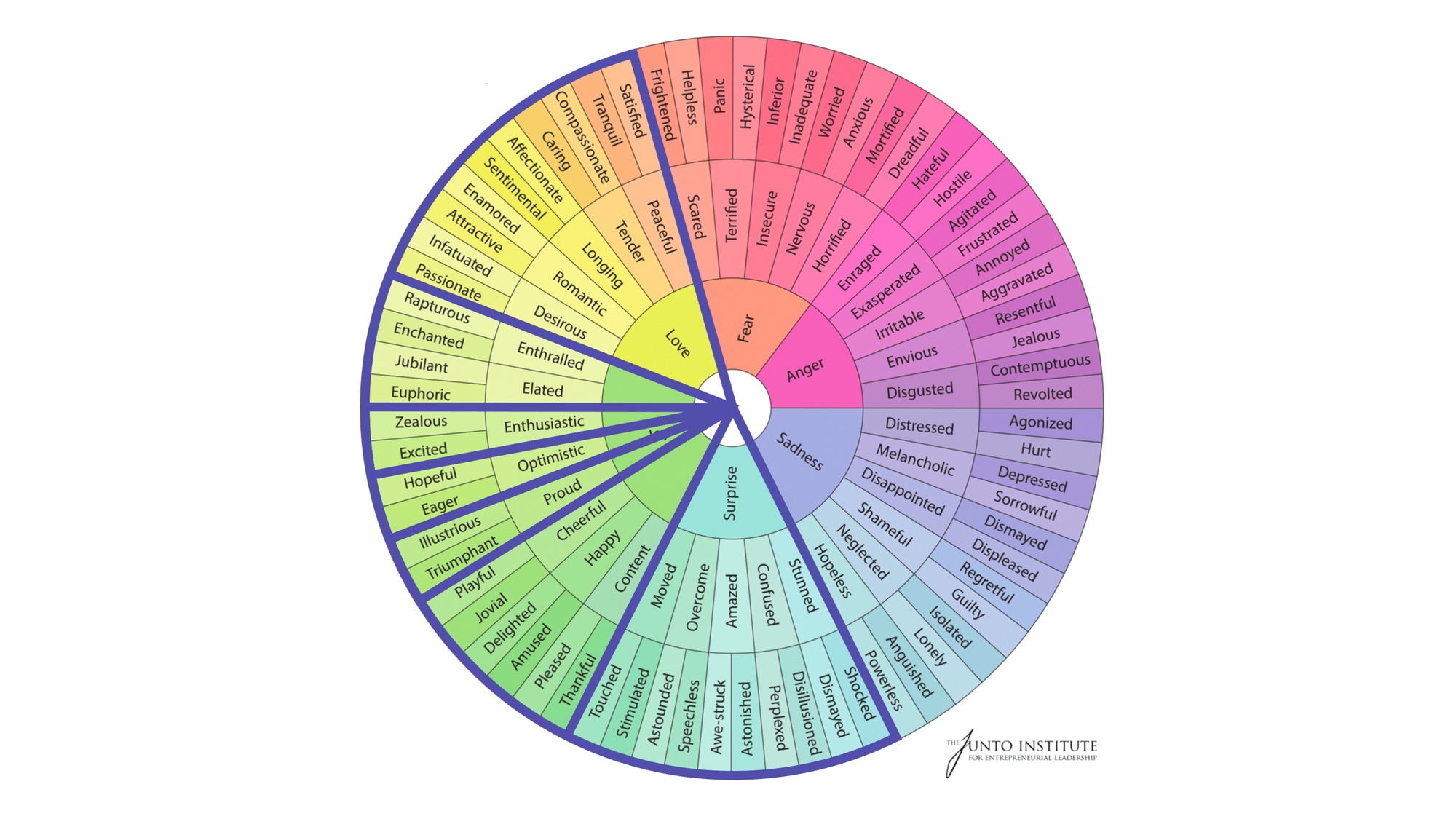How to Build Great Products With Game Design, Not Gamification

Metadata
- Author: Rahul Vohra
- Full Title: How to Build Great Products With Game Design, Not Gamification
- URL: https://blog.superhuman.com/game-design-not-gamification/
Highlights
There are many models of human emotion. The most famous is Plutchik’s wheel. Plutchik identified 8 core emotions, with opposite emotions across from each other. For example, joy is opposite from grief.
You can blend adjacent emotions to create new complex feelings. For example, when you combine joy and anticipation, you get optimism. When you combine joy and trust, you get love.
 But as game designers, we need a much richer vocabulary than academia provides. The emotions we are aiming for are much more nuanced. This is the most useful model I have found by the Junto Institute, and it contains the subtleties that we need to care about.
But as game designers, we need a much richer vocabulary than academia provides. The emotions we are aiming for are much more nuanced. This is the most useful model I have found by the Junto Institute, and it contains the subtleties that we need to care about.
 (View Highlight)
(View Highlight)
Today, our business software feels like work. You have to do your email. You have to submit your expense reports. You have to enter data in your CRM. But what if we could make it less like work and more like play? With game design, we can. (View Highlight)review
Games need goals. In fact, goals are a defining feature of games, but we can’t just have any goals. We need good goals that are concrete, achievable, and rewarding. (View Highlight)review
The first condition is knowing what to do next. You can make product decisions that make this dramatically easier for your users. In Gmail, when I archive this email, I end up back on the inbox. I now have to decide what to do next, and I have to do this every single time. This destroys flow. In Superhuman, when I archive the same email, I immediately see the next one. I don’t have to make any decisions at all. This creates flow. (View Highlight)review
There are many models of human emotion. The most famous is Plutchik’s wheel. Plutchik identified 8 core emotions, with opposite emotions across from each other. For example, joy is opposite from grief.
You can blend adjacent emotions to create new complex feelings. For example, when you combine joy and anticipation, you get optimism. When you combine joy and trust, you get love.
 But as game designers, we need a much richer vocabulary than academia provides. The emotions we are aiming for are much more nuanced. This is the most useful model I have found by the Junto Institute, and it contains the subtleties that we need to care about.
But as game designers, we need a much richer vocabulary than academia provides. The emotions we are aiming for are much more nuanced. This is the most useful model I have found by the Junto Institute, and it contains the subtleties that we need to care about.
 (View Highlight)review
(View Highlight)review

 (
(